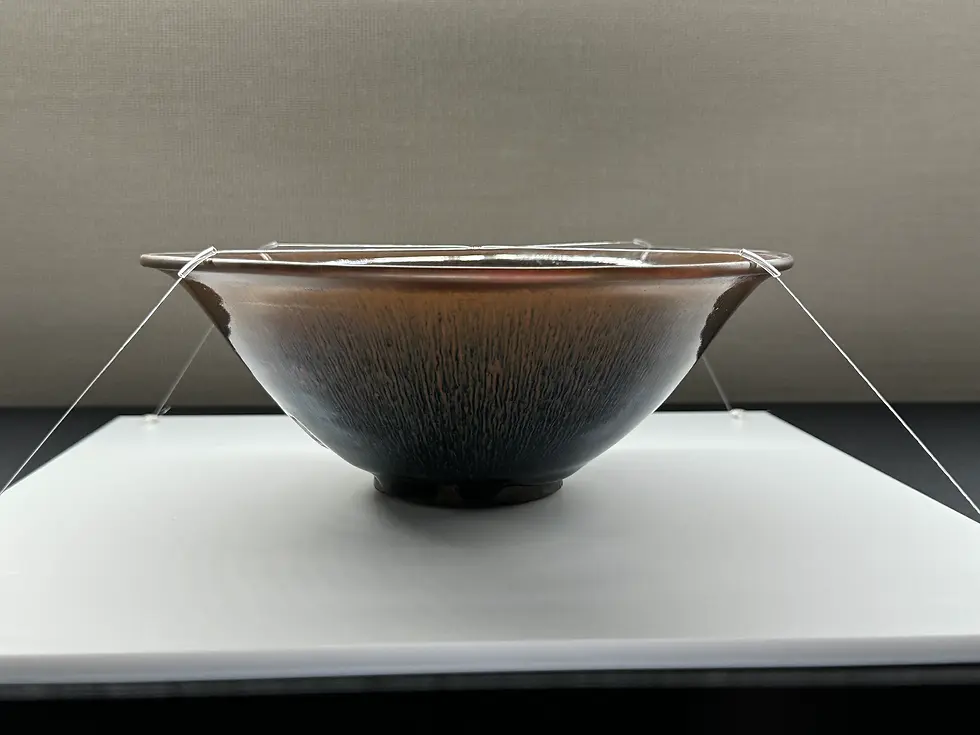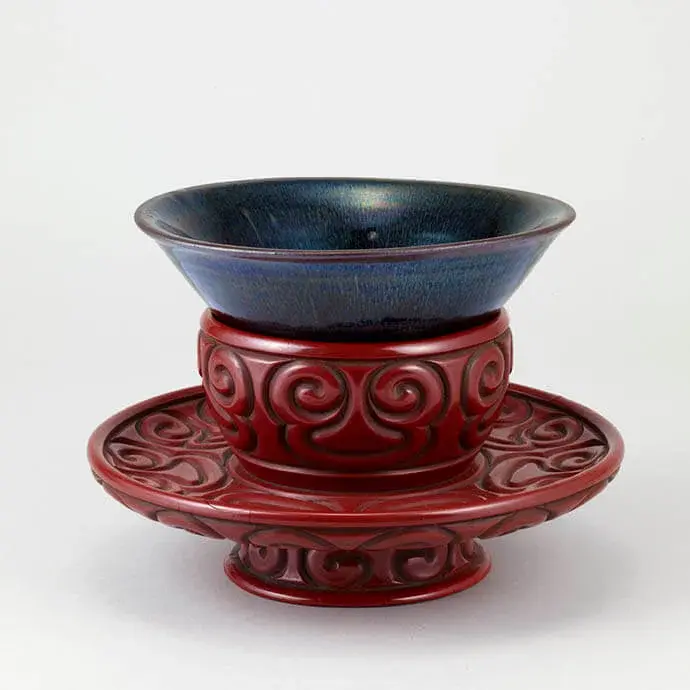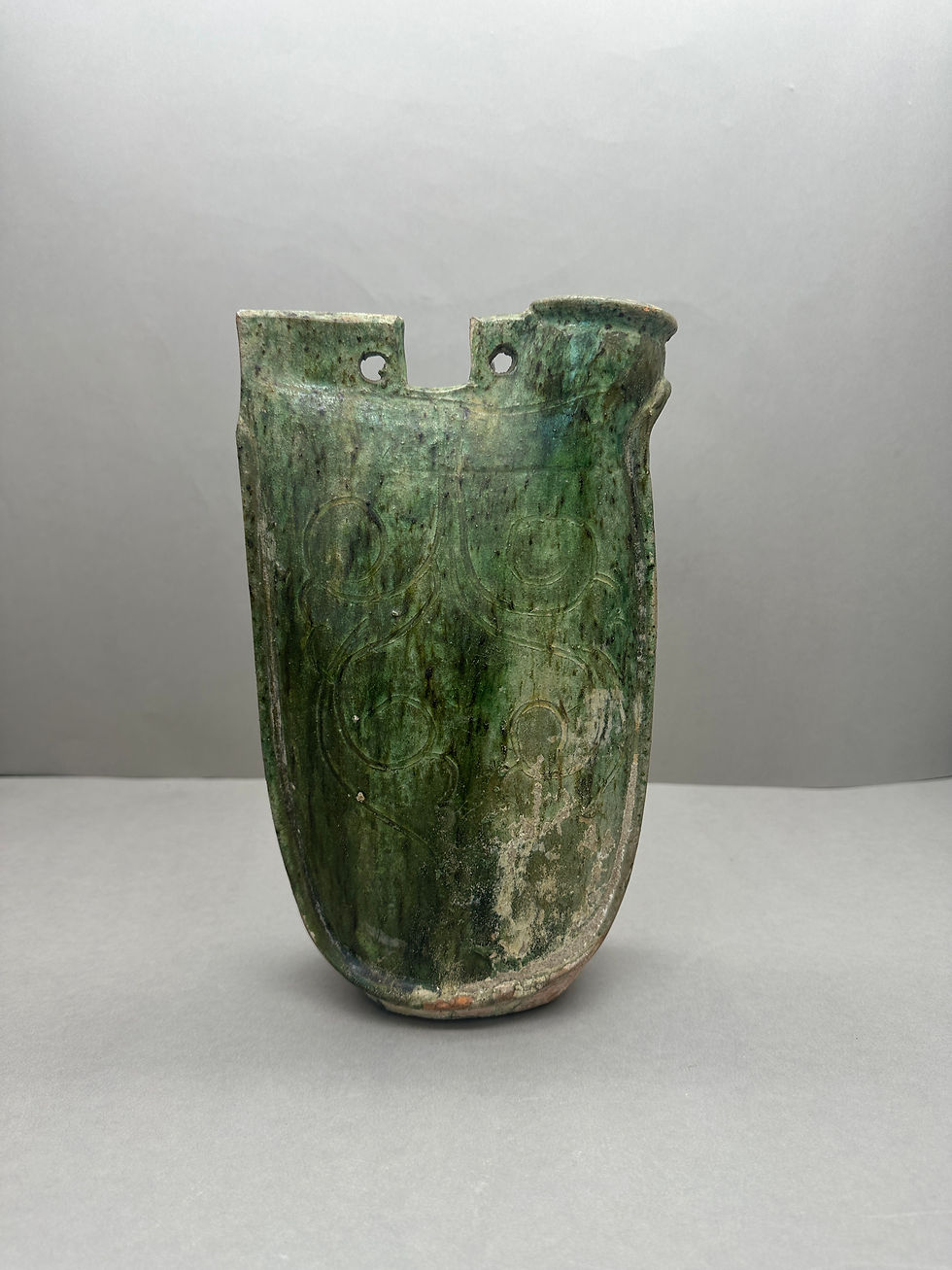宋代筆記 vol.76 傳世大天目:克里夫蘭博物館的建盞 - Heirloom Tenomku, A Large Jian Tea Bowl from the Cleveland Museum of Art.
- SACA

- Aug 14, 2024
- 4 min read
由於其特殊的尺寸,這件傳世建窯茶碗相當罕見。建器的魅力在於釉中的鐵質,在燒成後形成紅褐色、銀色的條紋和斑點,與濃厚的黑釉相映成趣。鑑賞家稱這些鐵質形成的痕跡為 「兔毫紋」,這種器皿在中國和日本的茶文化中非常受歡迎。
同樣大尺寸的傳世天目茶碗存世量不多,中國境內沒有博物館傳世天目收藏;海外博物館收藏只有在靜嘉堂文庫美術館、五島美術館、京都國立博物館、弗里爾博物館、野村美術館有這類大天目。
克里夫蘭這件作品是傳統意義上的深斗笠盞型,與靜嘉堂文庫美術館、弗里爾博物館、野村美術館的大天目茶碗類似;與五島美術館、京都國立美術館的所謂「供御」型不同。
Due to its exceptional size, this Fujian tea bowl is rather rare. The enjoyment of Jian ware rests with the glaze transmutation due to iron in the glaze, which developed into reddish-brown streaks and spots against a rich black glaze after firing. Connoisseurs called these iron formations "hare’s fur" marks, and the ware was very popular with the tea cultures in China and Japan.
Not many similarly large-sized heirloom Tenmoku tea bowls have survived, and there are currently several notable museum collections in Japan, including the Seikado Bunko Museum, the Gotoh Museum of Art, and the Kyoto National Museum.
從底足看,這件作品傳世時間已久,這類圈足的做法影響了當時很多茶碗的製作,包括附近的江西省吉州窯的一些茶碗,都是按照建窯茶碗的規格來做的。
Judging from the foot ring, this work has been in heirloom circulation for a long time, and the practice of this type of footrim influenced the production of many tea bowls at that time, including some tea bowls from the nearby Jizhou kiln in Jiangxi province, which were made according to the specifications of the Jian kiln tea bowls.
雖然一直以來傳說這類茶碗是用來分茶,但是具體宋代的點茶方法已經完全失傳。茶道一直以來的傳播結合了禪宗的思想,向來「不立文字」,即便是在日本的傳世茶道中,不立文字依然是茶傳承的精髓。
不立文字,是一種學習的方法。強行用宋徽宗的文字復原點茶是一種空中樓閣,是非常不現實的做法。失去了儀軌,便沒有了精神力量,從根本上理解,茶道是一種精神與行為的哲學,並不是茶本身的味道,更不是觀賞性。
Although it has long been rumoured that these bowls were used to dispense tea, the exact method of doing so was completely lost during the Song Dynasty. The tea ceremony has always been a combination of Zen thought and ‘no writing’, and even in the Japanese heirloom tea ceremony, no writing is still the essence of the tea tradition.
Not writing is a method of learning. Forcing the Song Huizong's words to restore the tea ceremony is a kind of castle in the air, and it is a very unrealistic approach. Without rituals, there is no spiritual power. Fundamentally understood, the tea ceremony is a philosophy of spirit and behaviour, not the taste of tea itself, let alone its ornamental qualities.
Provenance
?–1948
(Dikran G. Kelekian [1867–1951], New York, NY, sold to the Cleveland Museum of Art)
1948–
The Cleveland Museum of Art, Cleveland, OH
Citations
Lee, Sherman E. Tea Taste in Japanese Art. New York, NY: The Asia House Gallery, dist. by H. Abrams, 1963. Mentioned: cat. no. 9, p. 96; Reproduced: cat. no. 9, p. 23
Neils, Jenifer. The World of Ceramics: Masterpieces from the Cleveland Museum of Art. Cleveland: Museum in cooperation with Indiana University Press, 1982. Mentioned and reproduced: P. 108, no. 112
Exhibition History
China's Southern Paradise: Treasures from the Lower Yangzi Delta. The Cleveland Museum of Art, Cleveland, OH (organizer) (September 10, 2023-January 7, 2024).
The World of Ceramics: Masterpieces from the Cleveland Museum of Art. The Cleveland Museum of Art, Cleveland, OH (organizer) (June 30-September 5, 1982).
Tea Taste in Japanese Art. The Asia Society Museum, New York, NY (organizer) (February 20-April 21, 1963).
這件茶碗是1948年就入藏克里夫蘭博物館,這類日本早期傳世作品流入西方永久收藏並不是個例。
西本願寺在20世紀初期日本明治維新後的轉變中就變賣了10件以上的傳世建窯茶碗,據悉流入了巴黎吉美博物館的收藏,還有瑞士的博物館。
弗里爾博物館,油滴天目茶碗































Comments